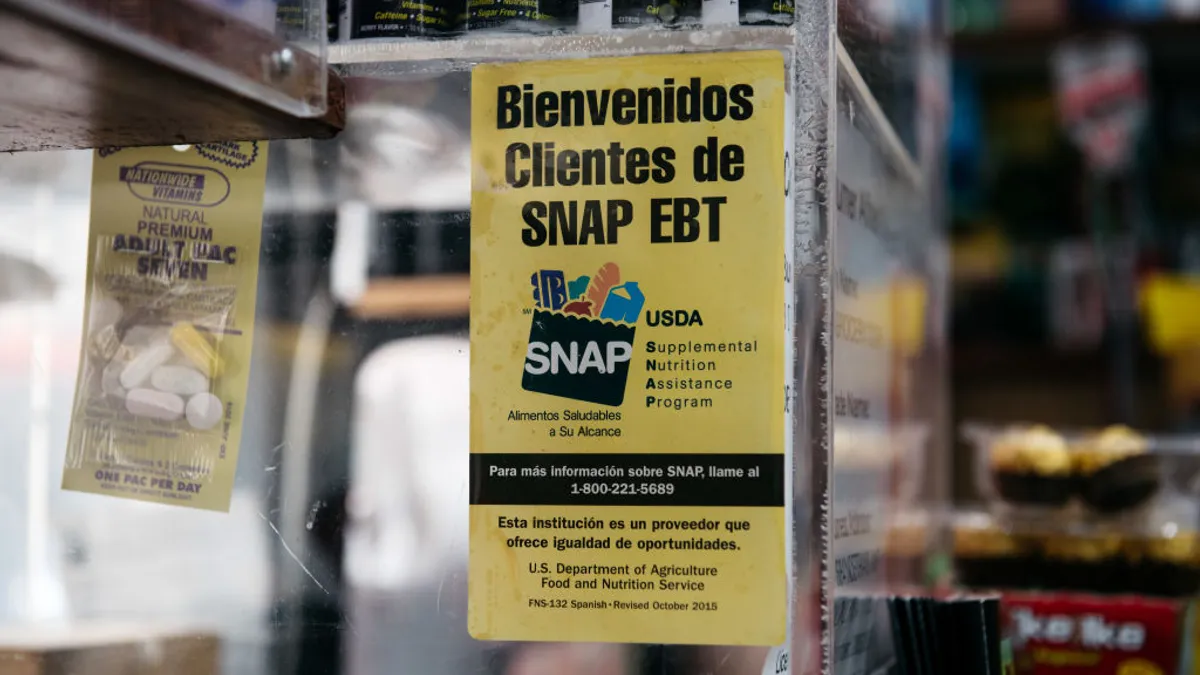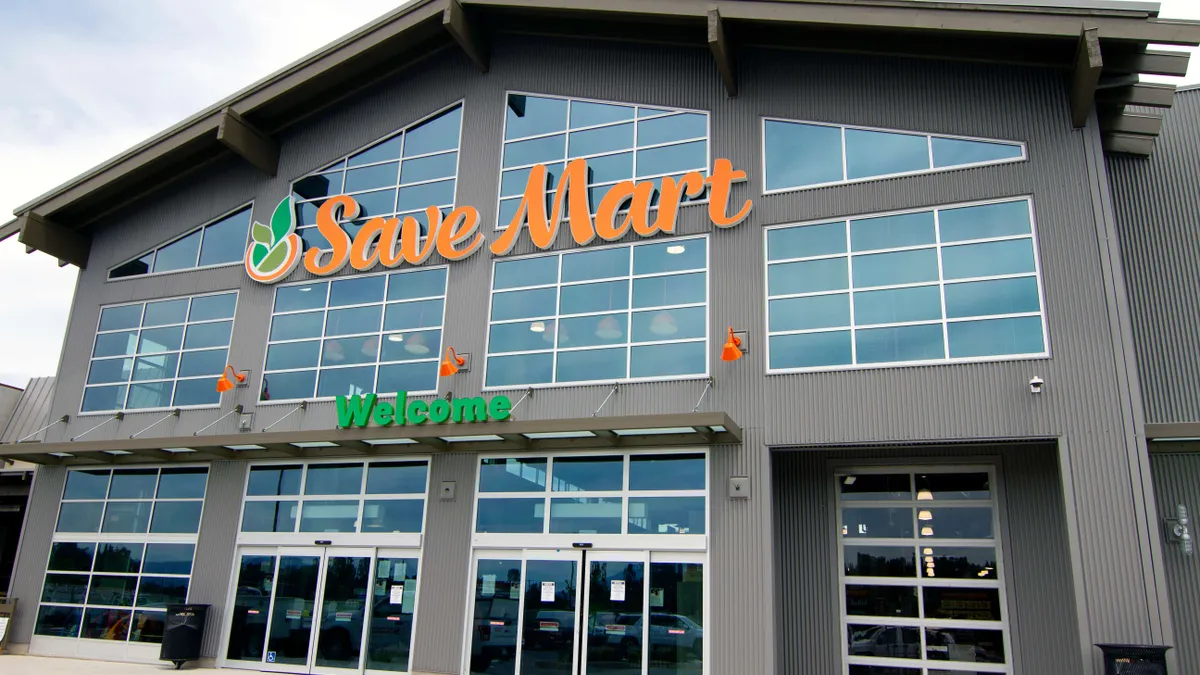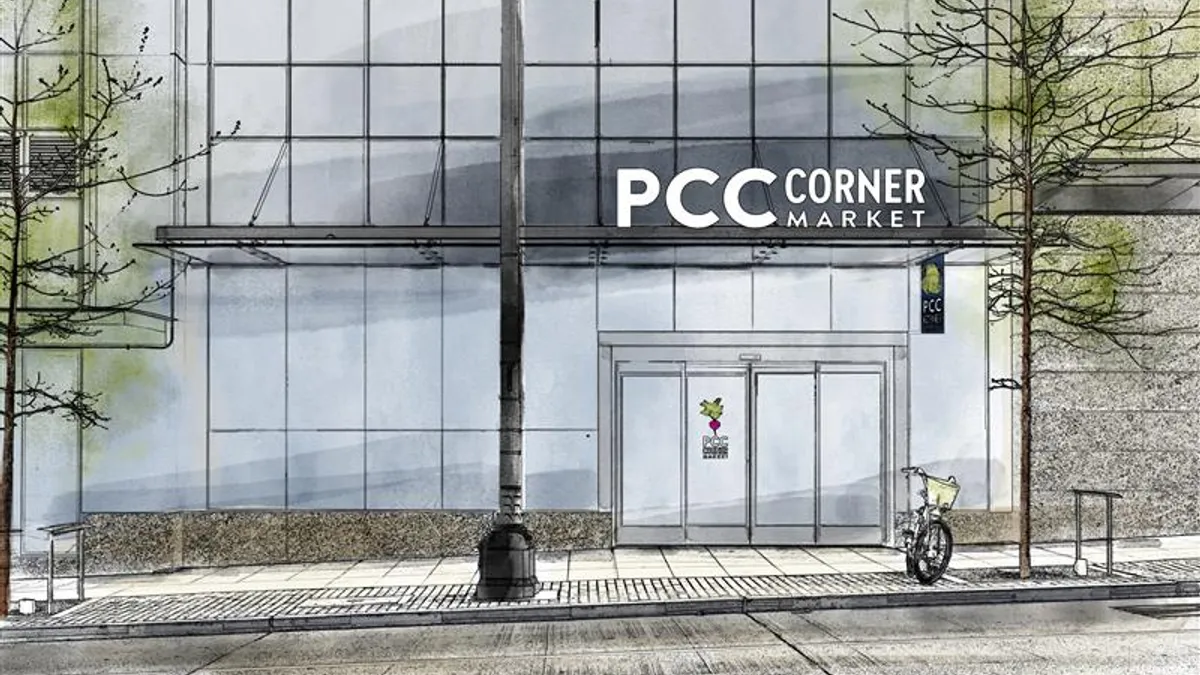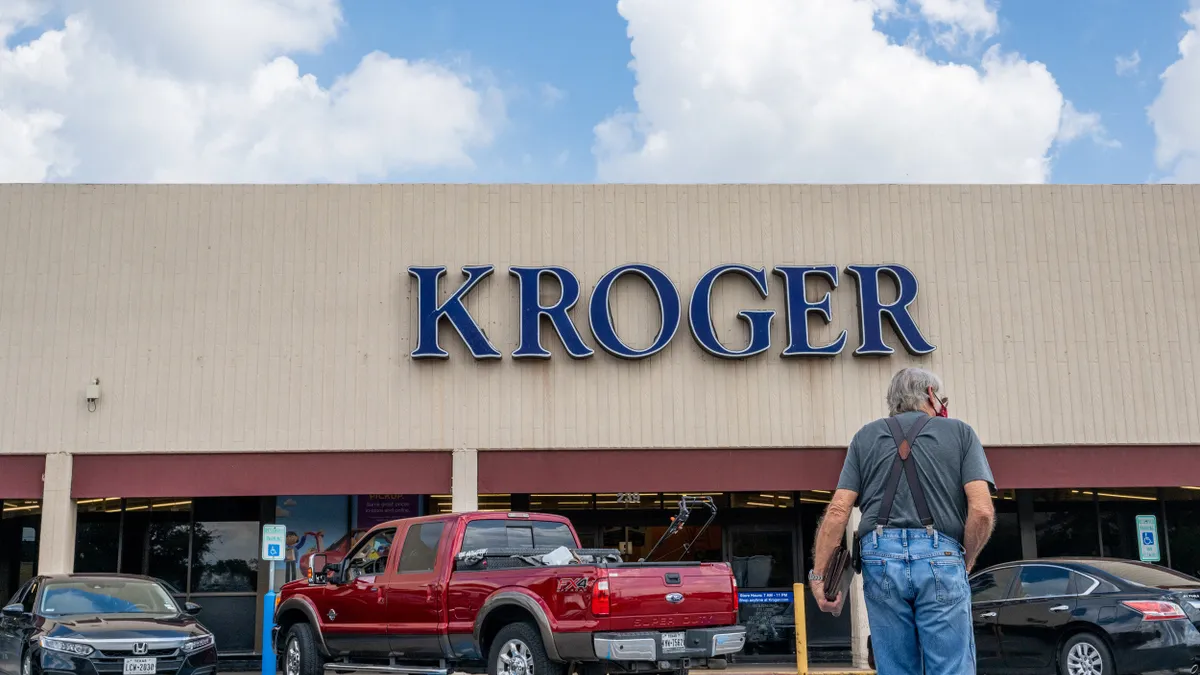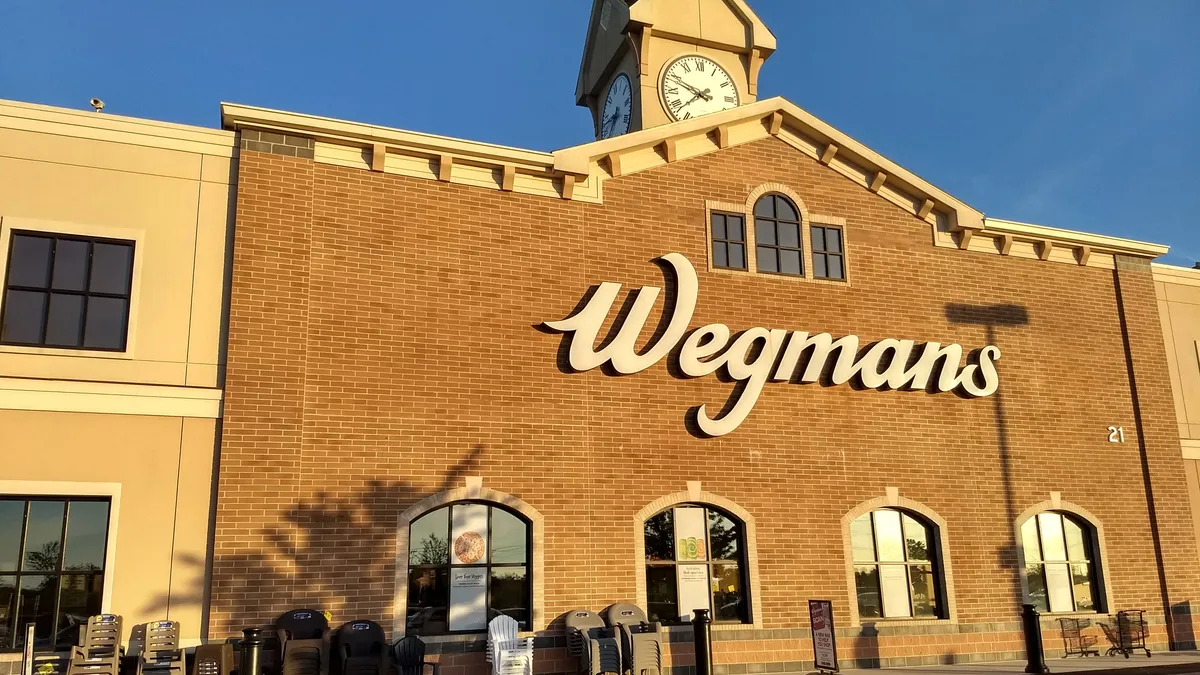SEATTLE — Amazon will open its first grocery store on Tuesday morning — and it’s not located in Southern California.
The company is throwing open the doors to Amazon Go Grocery, a new retail brand that combines the full selection of a traditional grocery store with the futuristic checkout-free technology that has captivated consumers and industry experts alike. Located in Seattle’s Capitol Hill neighborhood, it's more than three times the size of other Go stores and features around 5,000 products compared to Amazon Go’s 500 to 700.
The new format builds out many of the categories found inside its Go stores, and also adds new selections. Located near the entrance are more than two dozen varieties of fresh produce arranged in standalone and chilled displays, from organic apples to conventional onions and salad greens. Items are priced individually, with red tags noting "Great Low Price" items. Bananas are 19 cents each, while avocados are 49 cents.
Nearby sits a large case with fresh baked donuts, croissants and other pastries, along with a section filled with packaged fresh meals and sides. Six aisles of groceries, including frozen items, household goods, dairy and fresh meat occupy nearly half of the 7,700-square foot selling floor (the whole store is 10,400 square feet), while at the other end a separate room filled with beer, wine and spirits beckons shoppers. For those looking for a fresh cup of coffee, there's a self-service station serving Starbucks.
Cameron Janes, Amazon’s vice president of physical stores, gave Grocery Dive a tour of the sales floor on Monday. He said that while Amazon Go is tailored toward office workers grabbing breakfast, lunch and snacks, Amazon Go Grocery is targeting high-density urban neighborhoods and dinner solutions.
"Here, we're located closer to the customers’ home," Janes said. "Our selection is really about groceries and what’s for dinner tonight."
After scanning in at the same white kiosks found at traditional Amazon Go stores, shoppers will find a wide-ranging assortment of local, specialty and conventional products — from Redhook Brewlab beer brewed just down the street to Stouffer's frozen meals and cases of Coca-Cola. There's an artisan cheese department and a fresh bakery case with more than two dozen selections, including pastries and doughnuts shipped daily from Donut Factory.
Amazon Go Grocery mines supply chain efficiencies and tests out cross-branding opportunities. There's produce sourced from the same suppliers as Whole Foods and featuring the specialty grocers' 365 Organic branding on cases and bins. There's also 365 brand groceries, including canned vegetables and frozen meals. The fresh poultry department utilizes the same suppliers as Amazon Fresh, Janes said.
The location has a broad assortment of Amazon private label selections like Happy Belly dairy products and Single Cow fresh meat, reflecting the company's stepped-up efforts in store brand development. In the fresh meals department are Amazon Meal Kits, which launched in Amazon Go stores and are also available in select Whole Foods locations.
"Here, we're located closer to the customers' home. Our selection is really about groceries and what’s for dinner tonight."

Cameron Janes
Vice president of physical stores, Amazon
The prepared foods section features a range of entrees and sides, from meal kits to fully prepared options. There's heat-and-eat enchiladas, fresh pasta, quiches, Indian dishes and pot pies. An area Janes referred to as a "mini-go" section has snacks, fresh sushi and sandwiches shoppers can pick up for lunch or in between meals.
Janes said Amazon determined its store selection by analyzing online sales at Amazon Fresh, as well as traditional store data sources like market research firm IRI. True to Amazon's test-and-learn mentality, he said the company will see what sells and make adjustments as needed.
"Ultimately, we're going to learn what sells well once we open," Janes explained.
Just-walk-out technology evolves
Accommodating a larger format — not to mention loose, non-uniform items like fresh doughnuts, apples and onions that introduce new customer behaviors — required numerous refinements to Go’s just-walk-out technology. Amazon Go Grocery relies on a combination of computer-vision cameras, shelf sensors and machine-learning algorithms to monitor shoppers and determine their purchases. Fine-tuning exactly which products shoppers are picking up — and in many cases, putting back — requires different combinations of those three elements, Janes said. He declined to go into further detail about how the technology has evolved from Go to Go Grocery.
Janes said produce was the most challenging department to calibrate due to the way people shop the section, along with its assortment of similar-looking items that are harder for the technology to differentiate.
"[Customers] are doing a lot of rummaging. They're getting in there, picking something up and going, 'No, I don’t want that one, I want this one,'" Janes said.
Frozen foods also proved challenging because doors can fog up, temporarily blocking camera views. And while Amazon Go's technology has gotten better at telling the difference among like items, adding dozens of new products in some categories presented issues similar to produce. For example, during the tour, Janes picked up jars of Bon Marche and Smuckers jelly, noting how they're roughly the same size.
"As we expand to 5,000 unique items, you’re going to find more items that look similar," he said.
As the store technology advances, it's able to offer shoppers the sort of grocery experience they're used to. Amazon Go stores sell fresh bakery items, Janes said, but those items come pre-packaged, whereas Go Grocery's bakery items can be individually selected by shoppers.
"We’ve moved the technology forward so we can get rid of all that extra packaging and shop like they would in any other store," he noted.
Amazon Go stores have gradually introduced selections like produce and brewed coffee stations, paving the way for Amazon Go Grocery. In many ways, Go Grocery is closer to the original vision for the Go format. Amazon reportedly planned to make the Capitol Hill location at 610 East Pike Street a supermarket, but switched to a convenience-store model after executives noted service departments bogged down the frictionless experience the company desired. There are no full-service departments inside Amazon Go Grocery.
Customers will have to bag their own groceries at the new store — a step that Janes said will likely take some getting used to. But rather than requiring customers to bag items at the end of their trip similar to a self-checkout station, signs encourage people to "bag as you shop." There are green bags offered throughout featuring the new logo, and offered free of charge for a limited time, along with conventional black shopping carts. Shoppers can also bring their own bags.
Like all other Go locations, Go Grocery lets shoppers pay with cash if needed, while many others will simply exit the store through the white kiosks and get a receipt delivered shortly after through the Go app.
A multi-format approach to grocery disruption
Janes declined to talk expansion plans for Amazon Go Grocery. He said the company wants to learn from this first location and then respond accordingly. Amazon’s other retail store locations have expanded at a range of speeds. Amazon Go has opened more than 20 stores in its two years in business, while Amazon Books has nearly 20 locations more than four years after its first location opened. Amazon Fresh Pickup has just two locations in Seattle, both of which opened in 2017.
Amazon Go Grocery is yet another sign that the e-commerce retailer is determined to disrupt the $800 billion industry. While it's not a physical retailer traditionally, the e-tailer clearly realizes the need for locations in an industry where e-commerce sales have been slow to build. Along with Whole Foods, which it acquired in 2017, and a traditional grocery brand that is preparing to open in Woodland Hills, California, Amazon is taking a multi-front approach to grocery expansion.
Amazon is also attacking e-commerce, its native turf. It’s expanding delivery from Whole Foods stores and through Amazon Fresh, its pure-play service that’s now free for Prime shoppers. According to a report from media entrepreneur Matt Newberg, Amazon's California grocery store has a micro-fulfillment system that aims to quickly fill online orders.
Amazon Go Grocery, meanwhile, doesn't offer store pickup or on-demand delivery. Janes said this is because the format is focused on filling quick trips.
“We’re really focused on that convenience aspect, in and out, really quickly," he said.
Will Amazon Go Grocery unsettle competing grocers? When it unveiled Go two years ago, the format was hailed as a novelty in the industry. Since then, however, technology companies like Trigo Vision and Grabango, along with retailers like Ahold Delhaize and 7-11, have developed their own checkout-free technology, offering packaged as well as weighted items. Retailers like Giant, Hy-Vee and Publix are also experimenting with multiple store formats tailored to specific markets.
However, no grocer yet has opened or announced a checkout-free store that’s as large as Amazon Go Grocery. And according to Janes, no competitor offers an experience that's as technologically advanced yet still intuitive for shoppers.
“Our aim is to let the technology be in the background and just let our customers shop the way they normally shop,” said Janes.








